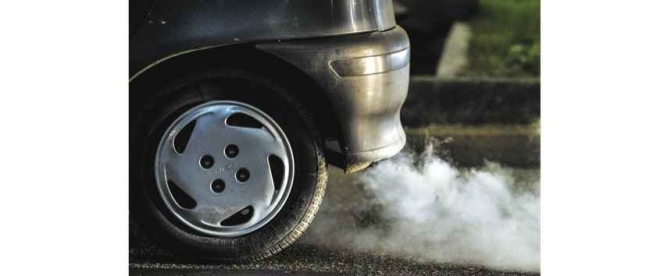
Vehicle-related particulate matter (PM) emissions may arise from both exhaust and non-exhaust mechanisms, such as brake wear, tyre wear, and road pavement abrasion, each of which may be emitted directly and indirectly through resuspension of settled road dust. Several researchers have indicated that the proportion of PM2.5 attributable to vehicle traffic will increasingly come from non-exhaust sources. Currently, very little empirical data is available to characterise tyre and road wear particles (TRWP) in the PM2.5 fraction. As such, this study was undertaken to quantify TRWP in PM2.5 at roadside locations in urban centres including London, Tokyo and Los Angeles, where vehicle traffic is an important contributor to ambient air PM.
The sources of PM2.5 vary spatially with long-range transport sources generated mainly from secondary PM and local sources generated mainly from combustion processes associated with industrial operations and road transport. A recent literature review of various PM2.5 local source apportionment studies conducted in 51 different countries concluded that 25% of urban ambient air pollution from PM2.5 is contributed by traffic, 15% by industrial activities, 20% by domestic fuel burning, 22% from unspecified sources of human origin, and 18% from natural dust and salt. Both primary and secondary PM were accounted for in the analysis and the contribution was dependent on the source. For example, the researchers generally apportioned traffic sources by primary PM emissions and the unspecified sources of human origin based on secondary PM emissions. PM2.5 also varies spatially and temporally.
Over the last 20 years, environmental agencies worldwide have enacted regulations, including those for motor vehicles, in an effort to reduce the emissions of PM2.5; and, indeed, a decline is observable in areas with established monitoring networks. For example, in the US, from 2000 to 2016, the nationwide levels of PM2.5 have decreased 42%; with the vast majority of the measurements below the national standard of 12 μg/m3 since 2012. In Europe (EU-28), the emissions of primary PM2.5 decreased by 16% from 2003–2012.
Vehicle-related PM emissions may arise from both exhaust and non-exhaust mechanisms, such as brake wear, tyre wear, and road pavement abrasion. Several researchers have indicated that the proportion of vehicle traffic attributable to PM2.5 will come increasingly from non-exhaust sources, due to additional regulations limiting vehicle exhaust emissions. The current and future contributions of non-exhaust sources have been evaluated primarily through indirect methods such as various receptor-modelling approaches or air dispersion modelling paired with emission inventories. A recent literature review of non-exhaust emissions reported more than 250 estimates of contribution to ambient air PM.
When tyres interact with the roadway surface, tyre and road wear particles (TRWP) are produced, containing both the tread rubber and embedded road material.
The contribution of tyre wear to ambient PM10 and PM2.5 has been estimated to be between 0.8–8.5% and 1–10% by mass respectively, although the data are sparse and most estimates are indirectly calculated with only a few observational studies. Given the complex composition of the TRWP, a variety of analytical techniques have been proposed, but the only ones with sufficient specificity to the particles are chemical markers associated with the tread rubber, which include monomers styrene and 1,3-butadiene, as well as the dimers vinylcyclohexene and dipentene. Given the predicted increases in non-exhaust emission contributions to PM2.5, the current study was undertaken to measure levels of TRWP in PM2.5 in urban environments where traffic-related PM is significant. Sample locations were chosen to be representative of likely human exposure in various roadside microenvironments. To facilitate comparison to our earlier work and estimates published by others, we present mass-based concentrations and relative contribution to PM2.5 for both TRWP and tread for each sampling location.
Materials, methods
To select the cities for inclusion in this study, data were assembled for large urban areas in Europe, Asia, and the United States. A selection matrix was developed to identify cities based on several criteria including, levels of ambient PM2.5, traffic loads, population density, and local regulatory actions to reduce PM2.5.
In Europe, five cities were considered, including Barcelona, London, Milan, Paris and Rome, with London being ultimately selected. In Japan, six cities were considered, including Nagoya, Osaka, Tokyo, Saitama City, Yokohama, and Kyoto, with Tokyo being ultimately selected. In the US, three cities were considered, including Atlanta, Los Angeles and New York City, with Los Angeles ultimately selected.
Within each city, the site selection criteria included the presence of identifiable traffic and historical presence of high PM2.5 levels where possible. All air samples were collected near the roadside, and the distance from road was dictated by logistical constraints such as security of the equipment and available power sources. For London only, an urban background site was also included.
The analytical technique is based on the characteristic fragments generated by the thermal decomposition of the tyre tread polymers that include styrene butadiene rubber (SBR), butadiene rubber (BR) and natural rubber (NR). Briefly, the method consists of the following steps: the tread rubber polymers in environmental samples undergo thermal decomposition at 670 °C by Curie-point pyrolysis; next, the thermal decomposition products are separated using a gas chromatograph (GC); and finally, the pyrolysis fragments are quantified with mass spectrometry (MS).
The data were evaluated using the Analysis of Variance (ANOVA) and regression models to identify differences among the cities and trends in determinants of TRWP concentrations between sampling locations and cities.

Results
In total 80 samples were analysed, and the TRWP detection frequencies ranged from 0–100%. The lowest detection frequencies were recorded in Los Angeles, with four of the six locations showing no detections. The total ambient PM2.5 levels were low in Los Angeles during sampling days, which was surprising due to the historical levels recorded in the area for the same time of year.
The TRWP made a small contribution to total ambient PM2.5 levels, representing 0.1–0.68% of the total PM2.5 across all locations. The range of concentrations of TRWP were 0.012–0.29 μg/m3 in London, 0.010–0.1 μg/m3 in Tokyo, and 0.004–0.072 μg/m3 in Los Angeles. The highest concentrations were recorded at the Blackwall Tunnel Approach in London (mean 0.104 μg/m3 and range (0.03–0.29 μg/m3)) where significant braking activity occurs before the tunnel portal which creates more tyre wear abrasion than constant speed driving.
The highest TRWP PM2.5 concentration measured in Tokyo was at the Kawasaki Industrial Road location, which had the highest traffic count of the Tokyo sites. In both Tokyo and London, the traffic composition was dominated primarily by passenger car and light duty vehicle traffic, with truck traffic generally comprising less than 20% of the total traffic. One exception was Kawaskai Industrial Road, where the truck traffic accounted for nearly 43% of the traffic.
Uncertainties
The data generated from this research provide an initial observation of TRWP in PM2.5 using methods that are specific to tyre tread, however, they are site specific and may not be applicable more broadly given the small sample size and consequent low statistical power. The calculation of the TRWP concentration involves the assumption of 50% of the polymer in the tread and 50% of tread in the TRWP. However, the 50% assumption of tread in the TRWP is based on the characterisation of bulk TRWP in the size range of 0–150 μm. As such, the composition of the <10 μm fraction has not been specifically characterized.
It is currently unknown if the use of the 50% tread assumption overestimates or underestimates that composition in the <10 μm particles. Previously, the tyre wear contribution to the PM2.5 fraction was evaluated using Aerosol Time-of-Flight Mass Spectrometer (ATOFMS) and the researchers concluded that there was both a pavement and tread component, although the researchers did not have a quantitative estimate of the amounts. More recently, roadside airborne particulate in the 10–80 μm range was characterised using SEM EDX and the researchers concluded that the amount of pavement encrustation of the surface area of the ‘tyre core’ (i.e., tread) ranged from approximately 10% to more than 50%. As such, more research may be needed to refine TRWP composition in the PM10 and PM2.5 fractions.
Vredestein Quatrac Pro+ Wins Top Spanish All-Season Tyre Award
- By TT News
- December 31, 2025
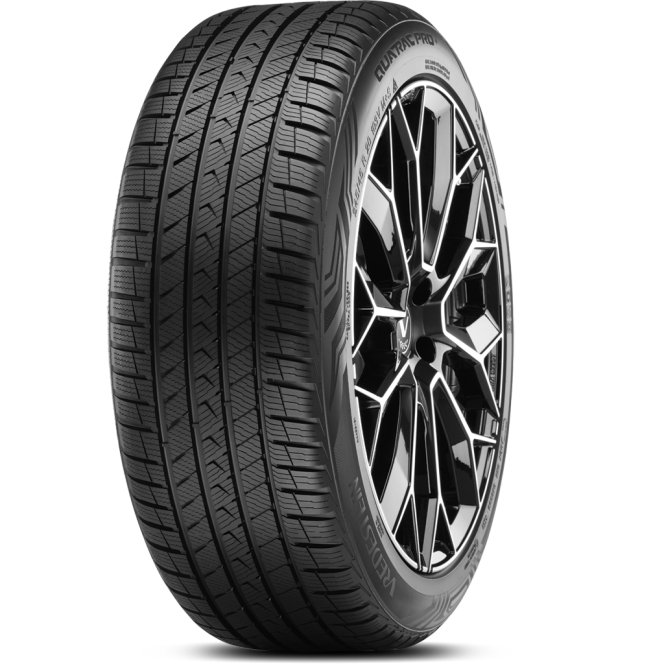
The Vredestein Quatrac Pro+ has been named ‘All Season Tyre of the Year’ at Spain’s prestigious industry awards organised by Neumáticos y Mecánica Rápida magazine and Posventa.com. This premium tyre, manufactured in Europe by Apollo Tyres Ltd, prevailed in a competitive field by excelling in critical areas such as safety, technological innovation and everyday usability, as determined by both an independent expert jury and reader votes.
The tyre earned this honour by delivering exceptional, versatile performance across diverse conditions, providing reliable safety and control on dry roads, in wet weather and through light snow. It also achieves high marks for driving comfort and efficiency. Developed to meet the needs of passenger cars and high-performance SUVs, the Quatrac Pro+ responds to the growing consumer demand for a single, year-round tyre solution that does not compromise on capability or driver confidence.
This award solidifies Vredestein’s position as a leading and innovative reference brand within the all-season tyre market. The official award ceremony is scheduled for February during the annual Tyre of the Year event, which will convene prominent representatives from across Spain’s tyre, automotive and aftermarket industries to celebrate the year’s top products.
Yves Pouliquen, Vice President, Commercial EMEA, Apollo Tyres Ltd, said, “This award is a strong endorsement of our commitment to delivering premium, high-performance all-season tyres tailored to the needs of European drivers. The Quatrac Pro+ encapsulates Vredestein’s longstanding expertise in all-season technology, combining safety, comfort and innovation.”
- INDIAN TYRE INDUSTRY
- TYRE RETREADING
- BIS STANDARDS
- IS 15704
- ECE R109
- CIRCULAR ECONOMY
- MSME CHALLENGES
- AUTOMOTIVE REGULATION
- CARBON REDUCTION
- FREIGHT
- LOGISTICS
Retreading Hangs In Balance Over Regulatory Conundrum
- By Gaurav Nandi
- December 30, 2025
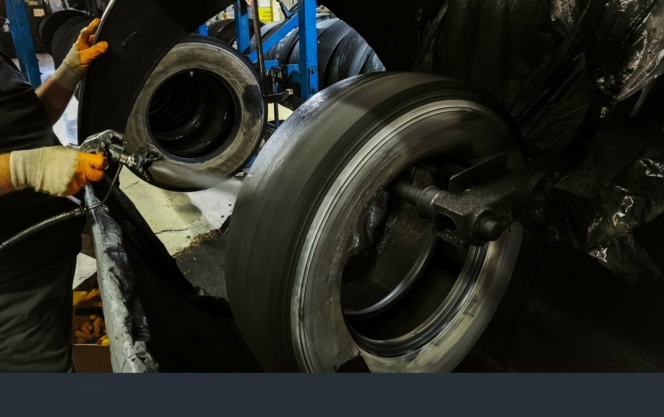
A population of over 1.4 billion people catapulting into the world’s third largest automobile market with four million trucks plying across a road network of 6.3 million kilometres supported by a USD 13.4 billion tyre market and a mining sector contributing around 2–2.5 percent of the country’s GDP demonstrate the strength of India’s automobile, freight and tyre sectors.
The story doesn’t end there as the Central Government adopts a strategic approach on reducing carbon emissions across these verticals, especially automobile and tyres, with targets such as the Net Zero Carbon Emissions by 2070, battery electric vehicles target by 2030, zero-emission truck corridors, Extended Producer Responsibility for the tyre sector; the list just goes on.
Amidst all such statistics and targets, a silent spectator remains the old and varied sector of tyre retreading. In a recent news story reported by Tyre Trends, the Indian Tyre Technical Advisory Committee (ITTAC) had made a proposal to Tyre Retreading Education Association (TREA) for mandating certain standards that will improve the quality of retreads. ITTAC has made recommendations to the BIS committee. TREA is part of the same committee. ITTAC and TREA are recommending different standards.
These standards included BIS retread standards, namely IS 15725, IS 15753, IS 15524 and IS 9168. The ITTAC had partially aligned Indian requirements with ECE R109, the European regulatory benchmark.
In a reply to the proposal, which was accessed by Tyre Trends, TREA urged the Indian Tyre Technical Advisory Committee to seek a deferment or non-applicability of BIS standard IS 15704:2018 for retreaded commercial vehicle tyres, warning that mandatory enforcement could cripple the sector.
In the letter, TREA argued that IS 15704:2018 is largely modelled on new tyre manufacturing norms and is technically unsuitable for retreading, which is a restoration and recycling process.
The standard mandates advanced laboratory tests such as spectrometer-based rubber analysis, endurance testing and compound uniformity checks, requirements that most retreading units, particularly small and medium enterprises, are not equipped to meet
The association highlighted that even large retreaders lack the infrastructure and skilled manpower needed for BIS-grade testing, while the sheer number of retreading units would make inspections and certifications operationally unmanageable for regulators.
TREA warned that compliance costs linked to machinery upgrades, audits and quality control could force 70–80 percent of units to shut down, leading to job losses, higher fleet operating costs and adverse environmental outcomes due to reduced recycling
Instead, TREA proposed that BIS prioritise retreading-specific standards such as IS 13531 and IS 15524, which focus on materials, process control, safety and quality consistency.
The body has also called for a phased transition roadmap, MSME support and industry training before any stricter norms are enforced, stressing that abrupt implementation would undermine the sector’s role in India’s circular economy.
The conundrum
India has a total of 36 administrative divisions comprising 28 states and 8 union territories. The tyre retreading sector has been continuously supporting circularity goals since the early 1970s across the world’s largest economy without getting mainstream recognition.
Even after five decades in service, the industry battles different bottlenecks including fragmentation, manpower shortage, tax pressures brought about by the recent GST revisions and now the implementation of such standards, just to name a few.
The sole practice that can simultaneously reduce carbon emissions from tyres and extend tyre life is assumed the nemesis of an ‘infamous and dangerous practice’ in some states of the country.
However, the industry has been drawing its techniques and quality parameters from the world’s oldest retreading economy, Europe.
“Big retreaders in India already have the necessary processes in place that conform to IS 15524 standards. However, as the standard is not yet mandated, we have voiced support for it because it is process-oriented and outlines how retreading should be carried out, including buffing and building procedures,” said TREA Chairman Karun Sanghi.
He added, “This standard focuses on how the work is done rather than imposing product-level testing that cannot be practically implemented. The current debate on IS 15704 stems from it being fundamentally incompatible. The standard includes requirements such as sidewall marking and destructive testing of retreaded tyres, which are impractical in a retreading environment where each tyre differs in brand, size, application and usage history,” he added.
Destructive testing, he argued, assumes uniform batch sizes. In retreading, where every casing is unique, testing even a single tyre would mean destroying finished products without yielding representative results. Applying such a framework would effectively require the destruction of every tyre in a batch, making compliance unviable.
“We have submitted our response to ITTAC and are awaiting feedback from the committee. We remain open to continued dialogue and will engage further once the committee responds to our submission,” said Sanghi.
According to him, a typical retreader processes about 300 tyres a month across multiple brands including MRF, JK Tyre, Apollo and Michelin and applications ranging from buses and trucks to mining vehicles. These casings vary widely in load cycles, operating conditions and duty patterns, often across several models from the same manufacturer.
The committee has cited European standard ECE R109, but Sanghi points to structural differences: “Europe is a global retreading hub where tyre manufacturers such as Michelin and Bridgestone dominate operations, collect their own tyres, retread them and return them to fleets, making batch-based destructive testing relevant. A similar model exists in US, where large tyre companies lead retreading and largely self-regulate without a single overarching standard. The Indian scenario is different, especially with a fragmented market.”
He stressed that the industry is not opposed to standards but to those that cannot be practically applied, warning that adopting European manufacturing-oriented norms without accounting for India’s market structure and operating realities would be counter-productive.
The debate is no longer about whether standards are needed but whether they are fit for purpose. Without accounting for India’s fragmented retreading ecosystem, enforcing impractical norms could dismantle a circular industry in the name of compliance.
TGL Season 2 Kicks Off With Hankook As Founding And Official Tire Partner
- By TT News
- December 29, 2025
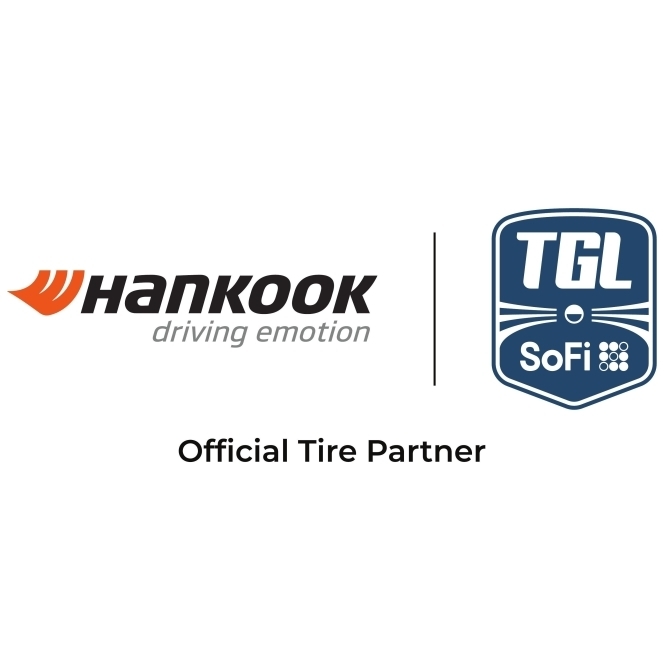
The second season of TGL Presented by SoFi, where Hankook Tire serves as the Founding and Official Tire Partner, commenced on 28 December 2025. This innovative league, a venture of TMRW Sports with backing from icons like Tiger Woods and Rory McIlroy, represents a strategic alignment for Hankook, uniting two entities driven by technological advancement. The partnership provides a global platform to reinforce Hankook's premium brand positioning across North America and worldwide through extensive visibility during broadcasts and at the state-of-the-art SoFi Center in Florida.
This unique venue embodies the league's fusion of sport and technology, featuring a massive simulator with a dedicated ScreenZone and a dynamic GreenZone. This area, equipped with a turntable and over 600 actuators, meticulously replicates real-world golf conditions indoors, creating an immersive arena experience. The competition itself is fast-paced and engaging, with teams of PGA TOUR players competing in Triples and Singles sessions over 15 holes. Innovative elements like the point-doubling ‘Hammer’, real-time strategy via ‘Hot Mic’ and a Shot Clock ensure a dynamic spectacle for fans.
The season opener presented a compelling narrative as a rematch of the inaugural finals, pitting the undefeated Atlanta Drive GC, featuring Justin Thomas and Patrick Cantlay, against a determined New York Golf Club squad led by Matt Fitzpatrick and Xander Schauffele. This match set the tone for an intensive season running through March, where six teams and 24 top golfers will compete. For Hankook, this partnership is more than signage; it is an active engagement with a global community, delivering a distinctive brand experience that bridges cutting-edge mobility and sport for enthusiasts everywhere.
Dunlop Secures CDP ‘A List’ Recognition For Climate Change And Water Security
- By TT News
- December 29, 2025
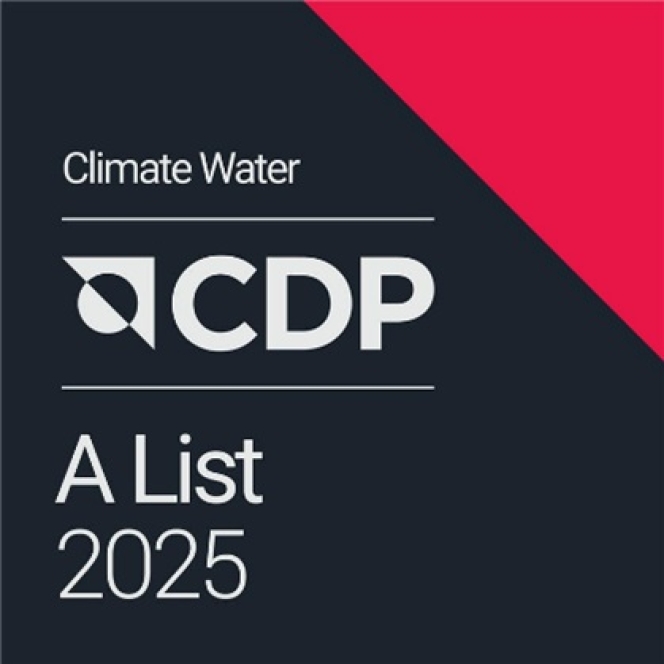
Dunlop (company name: Sumitomo Rubber Industries, Ltd.) has made its way to the annual A-List of CDP for climate change and water security. This premier designation, awarded for the first time to the company in the 2025 evaluation, recognises world-leading performance in transparency, risk management and environmental action. CDP’s annual assessment is a key benchmark for corporate sustainability across climate, water and forests.
This achievement stems from the Group’s integrated approach to material issues outlined in its corporate philosophy. It treats the interconnected challenges of climate change, biodiversity and the circular economy holistically, advancing concrete initiatives under its long-term ‘Driving Our Future’ sustainability policy.
On climate, the Group’s science-based emission reduction targets for 2030 are validated by the Science Based Targets initiative. Operational efforts include pioneering green hydrogen production at its Shirakawa Factory and developing tyres made entirely from sustainable materials by 2050. The company also works to reduce emissions across its supply chain, lowers tyre rolling resistance to improve vehicle fuel economy and extends product life through retreading.
For water security, the strategy is driven by localised risk assessments at global production sites. In seven facilities identified as high-risk, the goal is to achieve 100 percent wastewater recycling by 2050. Progress is already evident, with the company’s Thailand factory reaching full wastewater recycling in 2024.
These coordinated actions on multiple environmental fronts formed the basis for the Group’s simultaneous top-tier recognition in both critical categories from CDP.






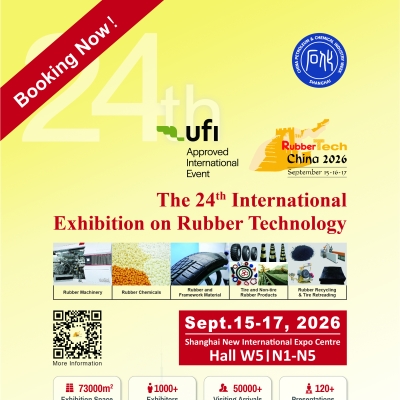
Comments (0)
ADD COMMENT